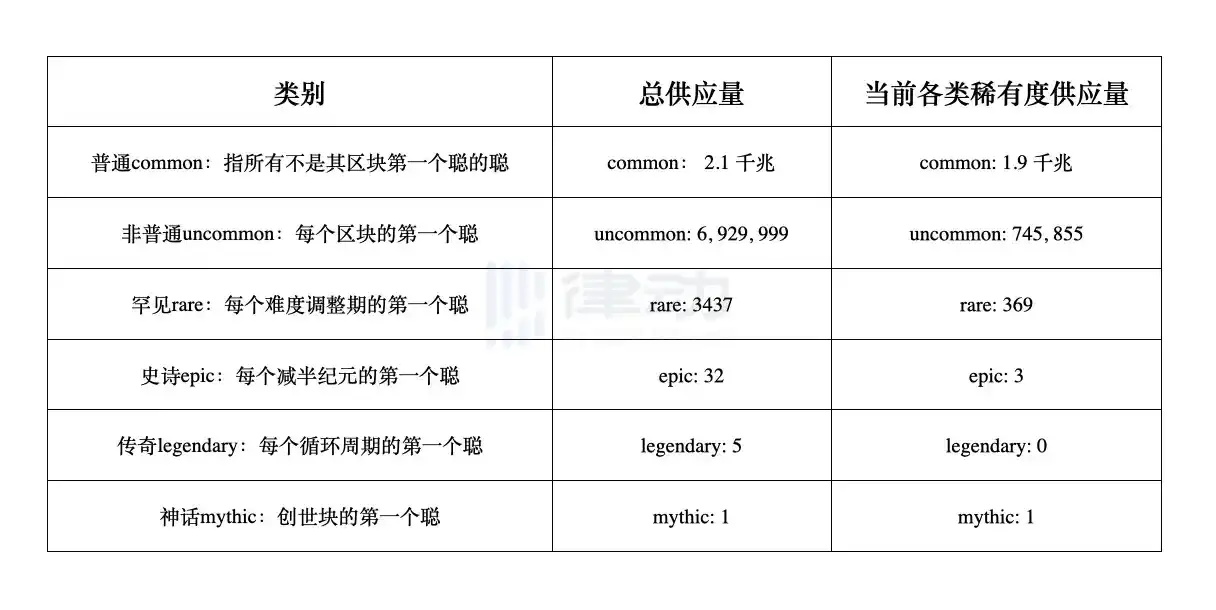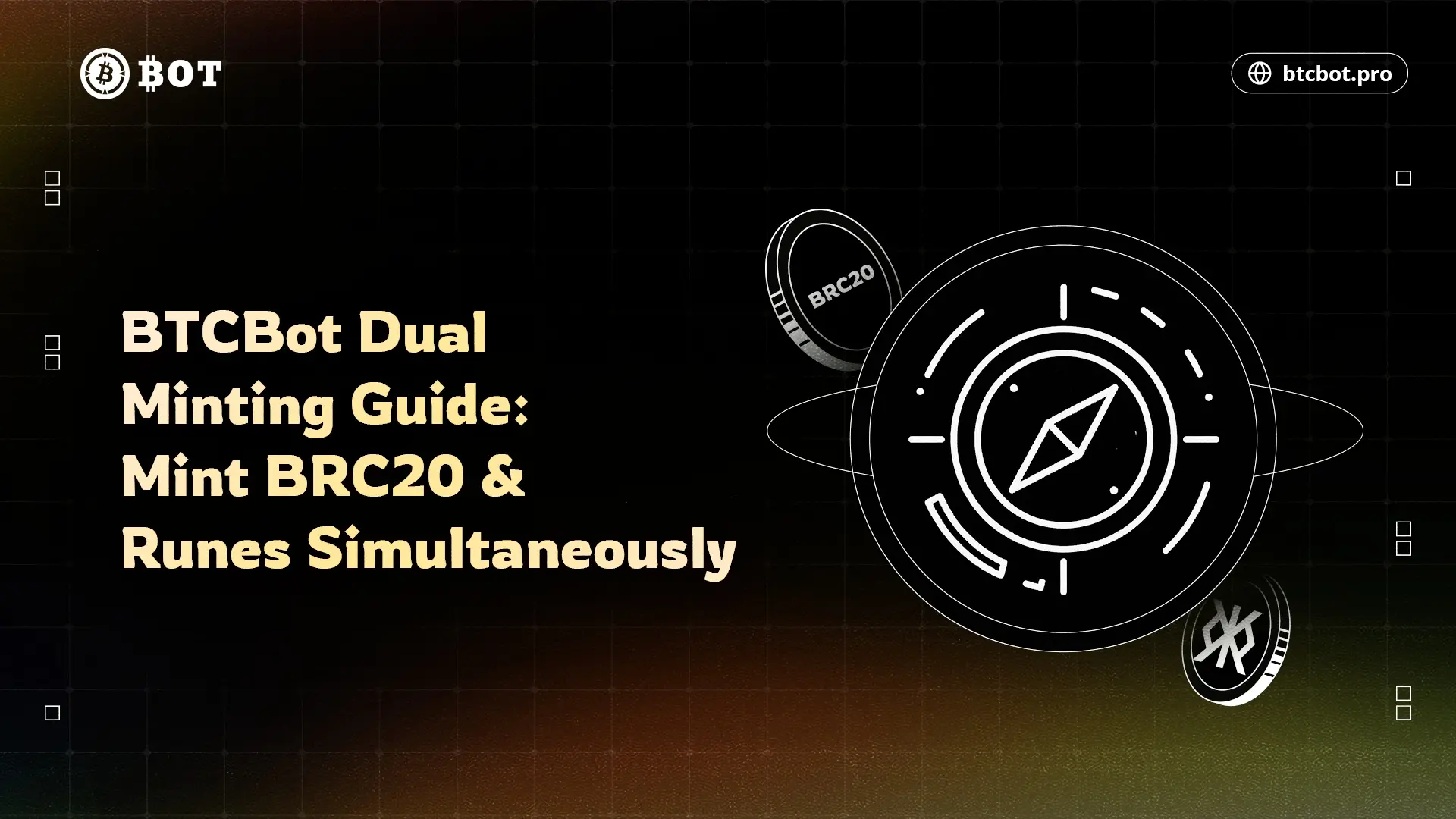Understanding the Knowledge Hierarchy of the Bitcoin Ecosystem: From BRC20 to Taproot, are you a "Bronze" or a "King"?
Written by: BlockBeats, Jaleel
With the birth of the Runes protocol and the explosion of the third round of the Bitcoin ecosystem, more and more communities are paying attention to the Bitcoin ecosystem. However, the biggest confusion for most newcomers is still "the threshold of the Bitcoin ecosystem is too high." BlockBeats has organized various terms of the Bitcoin ecosystem into five knowledge tiers, gradually unveiling the veil of the Bitcoin ecosystem.

Entry Level: Topics Familiar to Most Newcomers in the Bitcoin Ecosystem
1. Ordinals
The Ordinals protocol focuses on minting NFTs on the smallest unit of Bitcoin—satoshi—utilizing Bitcoin's Taproot upgrade, allowing each satoshi to represent a unique digital asset. Ordinals leverage the inherent characteristics of the Bitcoin blockchain, enabling each satoshi to uniquely represent a digital asset, bringing functionalities similar to NFTs on Ethereum to the Bitcoin network without requiring any additional layers or tokens.
2. Casey Rodarmor
Casey Rodarmor (@rodarmor) is a programmer and Bitcoin developer, as well as the creator of the Ordinals protocol and the Runes protocol. By developing the Ordinals protocol, Casey provided a new way to directly store and transfer non-monetary data (such as digital artworks) on the Bitcoin blockchain. It can be said that without Casey, there would be no Bitcoin ecosystem.

Image source: Ordinals summit 2023
3. BRC-20
BRC-20 is an experimental standard for creating and transferring fungible tokens on the Bitcoin network. It was introduced by an anonymous developer, Domo, in March 2023, aiming to mimic Ethereum's ERC-20 standard. Unlike ERC-20, which uses smart contracts, BRC-20 tokens are created by inscribing JSON data onto satoshis (the smallest unit) on the Bitcoin network.
4. Domo
Domo (@domodata) is the creator of the BRC-20 protocol. Since the development of BRC20, Domo has remained anonymous and has currently established a fund called Layer 1 Foundation to assist in the governance of BRC20.

Image source: Ordinals summit 2023
5. Runes
Runes is a new Bitcoin protocol developed by Casey Rodarmor, the creator of Bitcoin Ordinals. Unlike Ordinals, which is used to issue NFTs, Runes is used to issue fungible tokens on the Bitcoin network. It allows users to directly create, mint, and transfer tokens within Bitcoin's UTXO model without relying on any centralized services or intermediaries. Runes optimizes the BRC-20 protocol by combining the original minting and listing transactions into one.
6. Atomicals
The Atomicals protocol allows for the creation and management of digital assets called ARC-20 on the Bitcoin blockchain. These assets use the UTXO model and can store multiple files, making them suitable for more complex application scenarios. Unlike BRC-20 and Ordinals, Atomicals' AVM is designed to provide greater flexibility and scalability, achieving functionalities similar to smart contracts and supporting more complex digital asset management. Compared to Casey and Domo, the author of the Atomicals protocol, Arthur, is more anonymous, never appearing in person or at offline events, and has only participated in a few audio interviews.
7. Miner Fees
The fees paid by users to miners when conducting Bitcoin transactions, in order to have their transactions included in a block. Miner fees are the transaction fees of the Bitcoin network, ensuring the economic incentives for miners to support the operation and security of the network.
Second Level: Topics Familiar to Most Bitcoin Ecosystem Players
1. Bitcoin Halving
Bitcoin halving refers to the event where the Bitcoin mining reward is halved, occurring every 210,000 blocks, approximately every four years. The main purpose of halving is to control the issuance of Bitcoin, which is part of Bitcoin's design to simulate the gradually decreasing extraction rate of scarce resources (such as gold). Halving directly affects the incentive structure for miners and is believed to have a significant impact on Bitcoin's price. The most recent halving occurred on April 20, 2024, with the next halving expected in February 2028, when the block height reaches 1,050,000.
2. Satoshis
Satoshis, the smallest unit of Bitcoin, where 1 Bitcoin equals 100,000,000 satoshis. Since the value of Bitcoin can be very high, satoshis provide a smaller currency unit, making microtransactions possible.
3. Hash Rate
Hash Rate refers to the number of times all mining devices in the network attempt to solve block hashes per second, usually expressed in hashes per second (H/s). The hash rate is a key indicator of the security of the Bitcoin network; a higher hash rate means higher computational difficulty and security.
4. POW
Proof of Work, abbreviated as POW, is a cryptographic algorithm used to prevent abuse of network services (such as spam or distributed denial-of-service attacks). Bitcoin's proof of work requires miners to solve a complex mathematical problem, the difficulty of which is automatically adjusted to ensure that a new block is produced approximately every 10 minutes. Miners who successfully solve the problem can add new blocks to the blockchain and receive new bitcoins as a reward. This process not only protects the network from attacks but also serves as the mechanism for Bitcoin's issuance and circulation.
5. UTXO
Unspent Transaction Outputs, abbreviated as UTXO, refers to the amounts of Bitcoin in the network that can be used as inputs for new transactions. Bitcoin's transaction model is based on UTXO, where each transaction begins by referencing outputs from previous transactions as its inputs and ends by creating new UTXOs that can be used in future transactions.
6. Lightning Network
The Lightning Network is a "second layer" payment protocol built on the Bitcoin blockchain, designed to enable instant, high-throughput micropayments. The Lightning Network reduces congestion and fees on the blockchain by creating a network of payment channels, making small payments economical and fast.
Third Level: Topics Familiar Only to Experienced Bitcoin Ecosystem OGs
1. Nostr
Nostr is a simple decentralized social network protocol that allows users to create and manage their identities using key pairs and communicate through events (such as posts, contact information, and other social interactions). The founder, Fiatjaf (@fiatjaf), although this protocol has no direct connection to Bitcoin, it has garnered widespread attention from Bitcoin supporters because it represents a decentralized and censorship-resistant means of communication. In April 2023, a Lightning Network "hosted solution" called Nostr Assets Protocol also adopted the name Nostr.
2. BIPs
Bitcoin Improvement Proposals, abbreviated as BIPs, refer to design documents driven by the Bitcoin community that propose improvements or new features for the Bitcoin network for community review. BIPs are an important component of the Bitcoin development process, providing a formal avenue for how to improve the Bitcoin network.
3. Mempool
The memory pool, or Mempool, refers to the collection of all unconfirmed transactions stored on a Bitcoin network node. This term is short for "Memory Pool." When a transaction is sent to the Bitcoin network but has not yet been included (confirmed) in any block, it resides in the Mempool. Miners select transactions from the Mempool to create new blocks, typically prioritizing those with higher fees.
4. Rare Satoshis
Rare satoshis are not an official term of the Bitcoin network but refer to unique satoshis with collectible value that are associated with specific block times after the emergence of Ordinals. The unit of Bitcoin is satoshi, with each Bitcoin consisting of one hundred million satoshis. The scarcity and uniqueness of satoshis can be determined by ordinal theorists, giving them special significance, whether it be the Bitcoin mined by Satoshi Nakamoto, the first satoshi of a certain block, or the satoshi used to purchase pizza.

5. Bitcoin Full Node
A Bitcoin full node is a complete client that runs the Bitcoin protocol and maintains a full copy of the blockchain data. Full nodes validate all transactions and blocks, ensuring that transactions and blocks comply with Bitcoin's rules. Bitcoin full nodes are crucial for the health and decentralization of the network. They help to distribute power across the network, ensuring that no single entity can control or alter Bitcoin's transaction history. Full nodes also enhance the security of the network, as the more nodes that validate transactions, the harder it becomes to manipulate the entire system.
Fourth Level: Formally Delving into the Rabbit Hole
1. Index
In the context of Bitcoin, "index" typically refers to a structure used for quickly retrieving data from the blockchain database. For example, the transaction index (txindex) is an optional feature that allows nodes to create an additional database to store metadata for each transaction, including their location in the blockchain. When transaction indexing is enabled, nodes can access any transaction's information more quickly, which is very useful for developing applications and services, especially those that need to provide extensive blockchain data queries.
2. OP_RETURN
OPRETURN is an opcode in Bitcoin's scripting language that allows a small amount of data (currently capped at 80 bytes) to be embedded in a Bitcoin transaction. This data is non-spendable and therefore not used as part of the input. OPRETURN is primarily used to add metadata to transactions, which can be utilized for various applications, such as proving the existence of data at a certain point in time (timestamp services), adding simple messages, or implementing more complex blockchain layer applications. Since this data is permanently recorded on the Bitcoin blockchain, it provides developers with an immutable data storage option.
3. Schnorr Signatures
Schnorr signatures are a digital signature algorithm proposed by mathematician Claus Schnorr. In Bitcoin, Schnorr signatures were introduced through the Taproot upgrade, aiming to coexist with or replace the existing ECDSA (Elliptic Curve Digital Signature Algorithm) signature scheme. Schnorr signatures offer several advantages, including simpler signature aggregation, enhanced privacy, and higher efficiency. Signature aggregation allows multiple signatures to be combined into one, reducing data size and lowering transaction fees. Additionally, it improves support for multi-signature transactions, making transactions involving multiple parties appear indistinguishable from regular transactions, thereby enhancing privacy.
Fifth Level: The Most Profound Knowledge of the Bitcoin Ecosystem
1. Segregated Witness
Segregated Witness, abbreviated as SegWit, refers to an upgrade to the Bitcoin protocol aimed at addressing transaction scalability and transaction malleability issues. SegWit increases the effective capacity of blocks by "separating" signature information from transaction data, thereby reducing the size of each transaction to some extent and improving network throughput.
2. PSBT
Partially Signed Bitcoin Transactions, abbreviated as PSBT, is a standard format used to transfer incomplete transactions between different participants for signing. It allows multiple parties to collaboratively create, sign, and send transactions without exposing their private keys to other participants.
3. RBF
Replace-by-Fee, abbreviated as RBF, refers to a mechanism that allows senders to replace an existing transaction with a higher fee before it is confirmed on the blockchain. This mechanism is often used to accelerate the confirmation speed of transactions or to correct unconfirmed transactions that were set with too low a fee due to user error.
4. "RBF" Sniping
RBF has given rise to "RBF" attacks, a profit-making sniping strategy. Users monitor unconfirmed low-fee transactions and attempt to replace the original transaction by submitting the same transaction with a higher fee using the RBF mechanism. This is often used by mining pools or individual miners who hope to increase their profits by extracting higher transaction fees.
5. Taproot
Taproot is a significant upgrade to the Bitcoin network that primarily enhances privacy and scalability through a combination of MAST (Merkelized Abstract Syntax Trees) and Schnorr signatures. Taproot allows complex transactions to appear indistinguishable from regular transactions on the blockchain, thereby improving privacy. Additionally, it enhances the network's scalability and efficiency. It can be said that the Bitcoin ecosystem began to flourish because of the Taproot upgrade.










